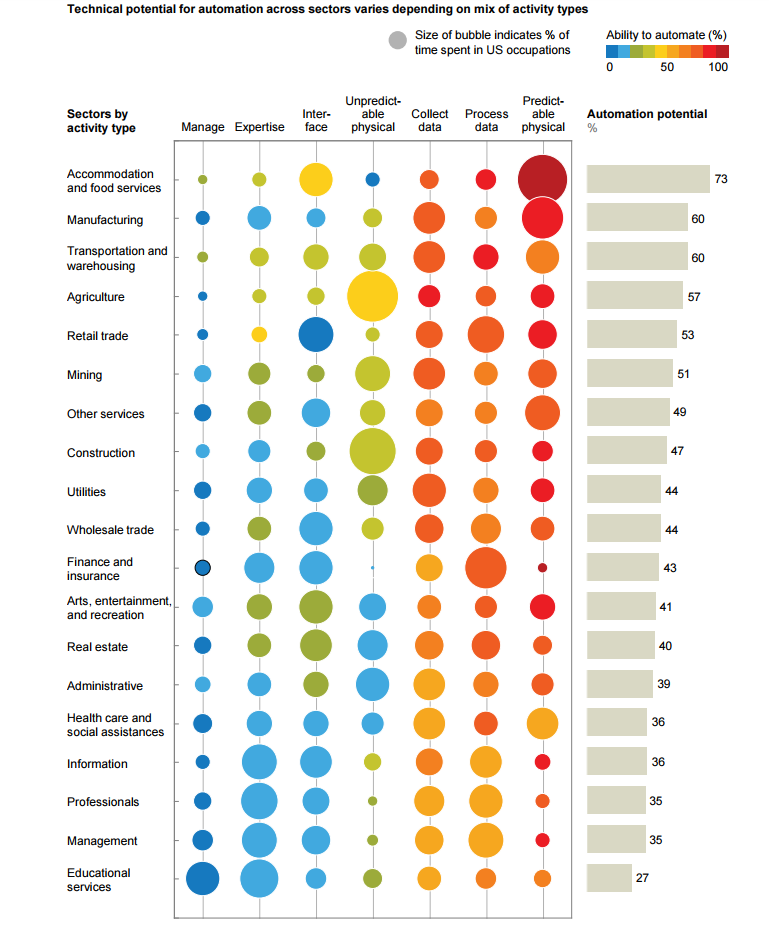It is astonishing how the world around us is changing rapidly. More and more companies are now planning their move to the cloud and revamping their business models. Cloud computing has now become a new trend being followed by most types of companies; it has now become a reliable business solution to automate processes.

(Infographic Source: McKinsey Global Institute)
Many still think that cloud computing is an online method to store data. However, cloud computing is much more than that. It is the delivery of SaaS computing services like storage, servers, databases, software, etc. over the Internet. The cloud has transformed the IT landscape by eliminating the need to buy expensive servers and storage devices.
The vision behind introducing the cloud was to provide automated services and to scale them automatically. This vision is now a reality. Let us see how:
The introduction of Virtual Machines (VMs) considerably eased the distribution of workloads and their sizing, deploying virtual networks, and their management and monitoring. However, these processes were repetitive and time-consuming, which directly interrupted the company processes.
With the cloud, all such repetitive tasks are automated. IT teams can easily create processes that manage the workload automatically and scale up/down according to the requirement. Also, these processes are less prone to errors and offer better data security.
The aim of IoT is to build a network of billions of physical devices which are connected to each other with the help of the Internet. These devices share data with each other, which leads to the automation of tasks. For example, if the check engine light is on, the car can automatically send the details of the vehicle and the fault code to the Original Equipment Manufacturer (OEM). Thus, the OEM will be able to make all the arrangements even before you call him.
But where do these devices store their data? This is where we need the cloud. The cloud provides unlimited storage spaces on cloud servers where the data is backed up automatically.
Our lives revolve around the small gadgets we have in our pockets – our smartphones. They have automated almost every task of our lives and proving to become the remote control of our future world. Thus, the future revolves around building mobile-first applications that can access cloud databases.
Public services are also getting automated with the help of cloud computing and smartphones. One such possible example is fitting an ATM with a smartphone. Whenever the balance is close to empty, the smartphone can update the information on a cloud server so that the needful can be performed.
Mobile app developers also require particular IT infrastructure and access to databases where the cloud can provide cost-efficient solutions.
The collaboration of cloud computing and AI results in smarter and intelligent systems, allowing businesses to automate and streamline IT and business processes. This helps IT personnel to minimize their effort on less-productive tasks and more time on revenue-generating tasks.
As the name suggests, hybrid cloud environments are a combination of private and public cloud. Some companies wish to use such systems so that they can enjoy the benefits of both the worlds.
With the help of the automation the cloud provides, it is now easier to automate load shifting, execute disaster recovery, create regular backups, and the like.
The most common method used for workload management is auto-scaling. Businesses need to consider the dynamic landscape of their industry and scale their infrastructure accordingly.
Another essential aspect of auto-scaling is to monitor the ongoing processes and clear unused resources. Administrators can control the workload and make changes automatically.
The agile development process requires regular development, testing, and deployment of applications. Thus, they require environments (for development and testing) that are automatically provisioned to automate the whole process.
The cloud has been and will remain to be an integral part for the developers to develop and deploy environments for the QA team and their customers.
IT infrastructure is stored in configuration files as code so that it can be launched automatically. These configuration files need to be evolved, tested, and managed, just like source code.
With cloud automation, IaC becomes extremely powerful as public and private clouds control almost every aspect of the infrastructure.
The cloud has become a necessity for organizations that need to automate their IT processes. It saves them time, money, and effort to manage a physical. But, the most important of all, it automates the IT processes, which result in streamlined business processes.
By Dr. Sangeeta Chhabra





